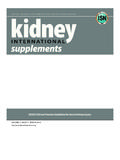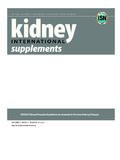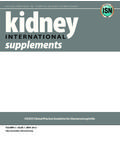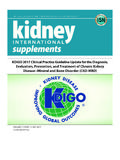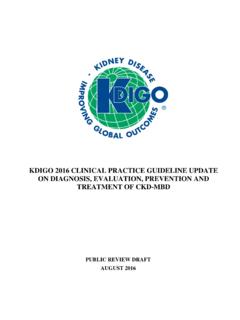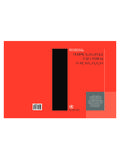Transcription of KDIGO Clinical Practice Guideline for the Diagnosis ...
1 VOLUME 76 | SUPPLEMENT 113 | AUGUST 2009 JOURNAL OF THE INTERNATIONAL SOCIETY OF NEPHROLOGYS upplement to Kidney InternationalKDIGO Clinical Practice Guideline for the Diagnosis , Evaluation, Prevention, and Treatment of Chronic Kidney Disease-Mineral and Bone Disorder (CKD-MBD) 15/19/09 11:14:04 AM5/19/09 11:14:04 AMKDIGO Clinical Practice Guideline for the Diagnosis , Evaluation, Prevention,and Treatment of Chronic Kidney Disease Mineral and Bone Disorder(CKD MBD)Tables and figuresSvDisclaimerSviiWork Group membershipSviiiKDIGO Board MembersSixAbbreviations and acronymsSxReference KeysSxiAbstractSxiiForewordS1 Chapter 1:Introduction and definition of CKD MBD and the development ofthe Guideline statementsS3 Chapter 2:Methodological approachS9 Chapter : Diagnosis of CKD MBD: biochemical abnormalitiesS22 Chapter : Diagnosis of CKD MBD: boneS32 Chapter : Diagnosis of CKD MBD: vascular calcificationS44 Chapter : Treatment of CKD MBD targeted at lowering high serum phosphorusand maintaining serum calciumS50 Chapter : Treatment of abnormal PTH levels in CKD MBDS70 Chapter : Treatment of bone with bisphosphonates, other osteoporosismedications, and growth hormoneS90 Chapter 5:Evaluation and treatment of kidney transplant bone diseaseS100 Chapter 6.
2 Summary and research recommendationsS111 Biographic and disclosure informationSS115 AcknowledgmentsS120 ReferencesS121 KDIGOVOL 76 | SUPPLEMENT 113 | AUGUST 2009 TABLEST able classification of CKD MBD and renal osteodystrophyS4 Table of recommendationsS10 Table criteria for systematic review topicsS12 Table for topics not related to treatmentsS13 Table search yield of primary articles for systematic review topicsS15 Table of study quality for an outcomeS18 Table system for grading quality of evidence for an outcomeS19 Table grade for overall quality of evidenceS19 Table of benefits and harmS19 Table 10. Implications of the strength of a recommendationS20 Table 11. Determinants of the strength of a recommendationS20 Table 12. Suggested frequencies of serum calcium, phosphorus, and PTH measurements according to CKD stageS26 Table 13. Sources and magnitude of the variation in the measurement of serum calcium, phosphorus, PTH, and vitamin DsterolsS27 Table 14.
3 Vitamin D2and D3and their derivativesS30 Table 15. Changes in bone histomorphometric measurements from patients in placebo groups of Clinical trials orlongitudinal studiesS36 Table 16. Relationship between fractures and PTH in patients with CKD MBDS40 Table 17. Positive predictive value for iPTH and b-ALP to predict bone turnover in patients with CKD stage 5S41 Table 18. Correlation between PTH or other serum markers and BMDS41 Table 19. Phosphate-binding compoundsS52 Table 20. RCTs of phosphate binders in children with CKDS63 Table 21. Summary table of RCTs examining the treatment of CKD MBD with sevelamer-HCl vs calcium-containingphosphate binders in CKD stages 3 5 description of population at baselineS63 Table 22. Summary table of RCTs examining the treatment of CKD MBD with sevelamer-HCl vs calcium-containingphosphate binders in CKD stages 3 5 intervention and resultsS63 Table 23.
4 Evidence matrix for sevelamer-HCl vs calcium-containing phosphate binders in CKD stage 5DS64 Table 24. Evidence profile for the treatment of CKD MBD with sevelamer-HCl vs calcium-containing phosphate binders inCKD stage 5DS65 Table 25. Evidence matrix for lanthanum carbonate vs other phosphate binders in CKD stage 5DS67 Table 26. Evidence profile of lanthanum carbonate vs other phosphate binders in CKD stages 5DS68 Table 27. Summary table of RCT examining alternate HD regimens in CKD stage 5D description of population at baselineS69 Table 28. Summary table of RCT examining alternate HD regimens in CKD stage 5D intervention and resultsS69 Table 29. Adverse events of alternate HD regimens in CKD stage 5DS69 Table 30. RCTs of calcitriol or other vitamin D analogs in children with CKDS82 Table 31. Evidence matrix of calcitriol or vitamin D analogs vs placebo in CKD stages 3 5S83 Table 32.
5 Evidence profile of treatment of CKD MBD with calcitriol or vitamin D analogs vs placebo in CKD stages 3 5S84 Table 33. Evidence matrix for calcitriol vs vitamin D analogs in CKD stage 5DS85 Table 34. Evidence profile for calcitriol vs vitamin D analogs in CKD stage 5DS86 Table 35. Evidence matrix for calcimimetics in CKD stage 5DS87 Table 36. Evidence profile for calcimimetics in CKD stage 5DS88 Table 37. Evidence matrix of bisphosphonates vs placebo/control in CKD stages 3 5S98 Table 38. Evidence profile of bisphosphonates vs placebo/control in CKD stages 3 5S99 Table 39. RCTs of treatments for CKD MBD in children with CKD stages 1 5TS106 Table 40. Evidence matrix of calcitriol or vitamin D analogs vs placebo or calcium alone in CKD stages 1 5TS107 Table 41. Evidence profile of calcitriol or vitamin D analogs vs placebo or calcium alone in CKD stages 1 5TS108 Table 42.
6 Evidence matrix of bisphosphonates vs control in CKD stages 1 5TS109 Table 43. Evidence profile for the treatment of CKD MBD with bisphosphonates vs control in CKD stages 1 5TS110 Table 44. Summary of cumulative evidence matrix with patient-centered outcomes, other surrogate outcomes, andbiochemical outcomesS111 KDIGOK idney International(2009)76(Suppl 113), Sv SviSvTable 45. Cumulative evidence matrix for all treatment studies by outcomeS112 Table 46. Grading of recommendationsS113 FIGURESF igure 1. Interpreting a surrogate outcome trialS5 Figure 2. Evidence modelS10 Figure 3. Parameters of bone turnover, mineralization, and volumeS17 Figure 4. Prevalence of abnormal mineral metabolism in CKDS24 Figure 5. Changes in serum calcium, phosphorus, and iPTH with time in hemodialysis patients of DOPPS countriesS25 Figure 6. PTH assaysS28 Figure 7.
7 Prevalence of types of bone disease as determined by bone biopsy in patients with CKD MBDS35 Figure 8. Prevalence of histologic types of renal osteodystrophy in children with CKD stages 5 5DS35 Figure 9. Types of renal osteodystrophy before and after 1995S35 Figure 10. Prevalence of bone histology types by symptoms in patients with CKD stage 5D receiving HD treatmentS36 Figure 11. Distribution of osteoporosis, osteopenia, and normal bone density by creatinine clearance in generalUS populationS37 Figure 12. Overlap between osteoporosis and CKD stages 3 4S38 Figure 13. Bone mineral density in patients with CKD stage 5DS38 Figure 14. Correlation coefficients between bone formation rate as seen on bone biopsies and serum markers of PTH,bone-specific ALP (BAP), osteocalcin (OC), and collagen cross-linking molecules (x-link)in patients with CKD stages 5 5DS40 Figure 15.
8 Comparison of PTH levels to underlying bone histology in chronic hemodialysis patientsS76 Figure 16. Risk of all-cause mortality associated with combinations of baseline serum phosphorus and calcium categories byPTH levelS77 Additional information in the form of supplementary tables can be found online at International(2009)76(Suppl 113), Sv SvicontentsDisclaimerSECTION I: USE OF THE Clinical Practice GUIDELINEThis Clinical Practice Guideline document is based on the best information available as of March2009, with a final updated literature search of December 2008. It is designed to provideinformation and assist decision-making. It is not intended to define a standard of care, andshould not be construed as one, nor should it be interpreted as prescribing an exclusive course in Practice will inevitably and appropriately occur when clinicians take intoaccount the needs of individual patients, available resources, and limitations unique to aninstitution or type of Practice .
9 Every health-care professional making use of theserecommendations is responsible for evaluating the appropriateness of applying them in thesetting of any particular Clinical situation. The recommendations for research contained withinthis document are general and do not imply a specific II: DISCLOSUREK idney Disease: Improving Global Outcomes ( KDIGO ) makes every effort to avoid any actual orreasonably perceived conflicts of interest that may arise as a result of an outside relationship or apersonal, professional, or business interest of a member of the Work members of the Work Group are required to complete, sign, and submit a disclosure andattestation form showing all such relationships that might be perceived or actual conflicts ofinterest. This document is updated annually and information is adjusted accordingly. Allreported information is published in its entirety at the end of this document in the Work Groupmembers Biographical and Disclosure information section, and is kept on file at the KDIGO administration KDIGOKDIGO gratefully acknowledges the following consortium of sponsors that make ourinitiatives possible.
10 Abbott, Amgen, Belo Foundation, Coca-Cola Company, Dole FoodCompany, Genzyme, JC Penney, NATCO The Organization for Transplant Profes-sionals, National Kidney Foundation Board of Directors, Novartis, Robert and JaneCizik Foundation, Roche, Shire, Transwestern Commercial Services, and International(2009)76(Suppl 113), SviiSviiWork Group KDIGOWORK GROUP CO-CHAIRSS haron M Moe, MD, FASN, FAHA, FACP,Indiana University School of Medicine,Roudebush VA Medical Center,Indianapolis, IN, USAT ilman B Dru eke, MD, FRCP,Ho pital Necker,Universite Paris 5,Paris, FranceWORK GROUPG eoffrey A Block, MD,Denver Nephrologists, PC,Denver, CO, USAJ orge B Cannata-And a, MD, PhD,Hospital Universitario Central de Asturias,Universidad de Oviedo,Oviedo, SpainGrahame J Elder, MB, BS, PhD, FRACP,Westmead Hospital,Sydney, AustraliaMasafumi Fukagawa, MD, PhD, FASNKobe University School of Medicine,Kobe, JapanVanda Jorgetti, MD, PhD,University of Sa o Paulo School of Medicine,Sa o Paulo, BrazilMarkus Ketteler, MD,Nephrologische Klink,Coburg, GermanyCraig B Langman, MD,Northwestern University,Feinberg School of Medicine,Children s Memorial Hospital,Chicago, IL, USAA deera Levin, MD, FRCPC,St Paul Hospital,University of British Columbia,Vancouver, British Columbia.

